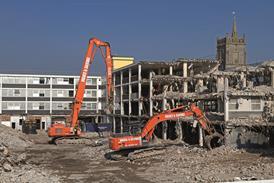This concern is set against the backdrop that not only are construction workers five times more likely to be killed than the average for all industries, they are also more than twice as likely to sustain a major injury. What makes it more worrying is that despite the Construction (Design and Management) Regulations, which were meant to help solve these problems, the number of accidents is on the rise.
The CDM Regulations were introduced back in 1994 to co-ordinate the management of health and safety through the design and construction processes, and to bring clients' influence to bear on improving safety.
Commitments to improving health and safety also flowed from the Latham and Egan reports. Although some clients, such as BAA, have pushed forward with health and safety initiatives and are now making real progress in achieving improvements, others have not done so well.
So what is the problem? Are the CDM Regulations the wrong way of addressing safety? CDM is arguably most focused on the design process, and design is seldom the killer. Most accidents happen on site during construction.
It would take a brave soul to recommend scrapping CDM. It achieves what it can and if this is only a heightening of awareness of health and safety then that is a valuable contribution. What we need is more emphasis on the practical side of health and safety. Those who prepare contract and tender documentation can contribute by considering such things as:
Consider moving away from lowest price tendering Include safety incentives in the tender documents Ensure best practice and accident reporting are also included
Postscript
Andrew Hemsley is managing director of consulting at Cyril Sweett and can be reached on 020-7242 9777 or at ahemsley@cyrilsweett.co.uk. This article was co-authored with Richard Honey.



















